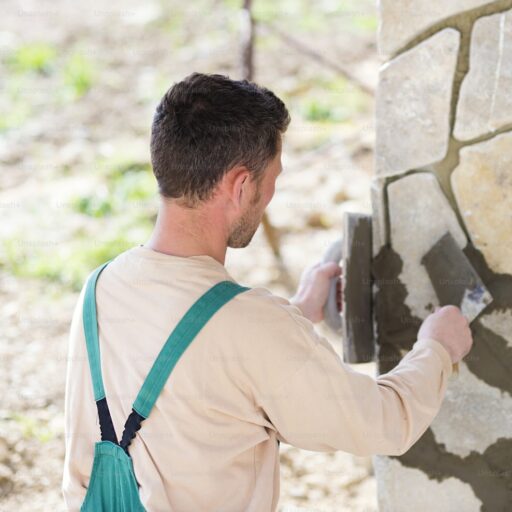Introduction: Why Natural Wall Stone Is More Than Just a Facade
You’ve seen homes and businesses decked out in natural wall stone, and maybe you’ve thought, “That looks nice.” But did you know that beyond the rustic charm, there are some surprising advantages hiding behind those earthy hues? From energy savings to eco‑friendly credentials, natural wall stone is far more than a pretty face. In this deep dive, we’ll uncover 8 things you didn’t know about natural wall stone—and why it just might be the smartest upgrade for your next project.
What Is Natural Wall Stone?
Definition and Key Characteristics
Natural wall stone refers to quarried stone used in thin veneer or full‑bed applications on vertical surfaces. Unlike manufactured stone, it’s the real deal—sliced directly from the earth, showcasing natural grain, color variations, and authentic texture.

Common Natural Wall Stone Types
- Sandstone veneers for warm tones
- Limestone slabs in soft grays
- Fieldstone for rugged, uneven surfaces
- Slate panels for sleek, modern looks
1. The Durability of Natural Wall Stone Surprises Homeowners
How Natural Wall Stone Stands Up to Weather
You might assume thin stone veneer would crack or crumble under harsh conditions. In reality, properly installed natural wall stone holds up to sun, rain, and freeze–thaw cycles far better than many synthetics.
Freeze–Thaw Resistance
The dense structure of quarried stone means water doesn’t seep in deeply, preventing damage when temperatures drop. That durability translates to decades of worry‑free performance.
2. Natural Wall Stone Can Improve Your Home’s Energy Efficiency
Thermal Mass Benefits
Because stone absorbs and slowly releases heat, an exterior clad in natural wall stone serves as a thermal battery. During the day, it soaks up solar warmth; at night, it radiates gentle heat back into your home.
Reducing Heating and Cooling Costs
By moderating indoor temperatures, natural wall stone can lower HVAC usage by up to 10–15%, offering real savings on utility bills.
3. Natural Wall Stone Is Eco‑Friendly
Sustainable Quarry Practices
Modern quarries prioritize environmental stewardship: land reclamation, reduced water use, and minimal chemical processing make natural wall stone a greener choice than many manufactured alternatives.
Recyclability and End‑of‑Life Use
When a stone veneer is removed or replaced, the pieces can be crushed and reused as gravel, paving aggregate, or even new stone blends—closing the material loop.
4. Installation Myths About Natural Wall Stone
Debunking Heavy Equipment Requirements
Think you need a crane and bulldozer to install natural wall stone? Not always. Thin‑veneer panels can be set by a small crew with basic scaffolding and mortar.
DIY vs. Professional Installation
While adventurous DIYers can tackle small accent walls, large facades often benefit from pros for proper flashing, drainage, and structural support. For quality installations, consider suppliers like or experienced installers recommended at Southern Stoneworks LLC .
5. Versatility in Design with Natural Wall Stone
Indoor and Outdoor Applications
Forget limiting stone to exteriors. Natural wall stone works wonders around indoor fireplaces, kitchen backsplashes, and even bathroom feature walls—bringing continuity from inside out.
Mixing Textures and Colors
Combine rough‑cut fieldstone with smooth sandstone slabs or accent with colored grout to create custom looks. Check out veneer design ideas for inspiration.
6. Maintenance of Natural Wall Stone Is Easier Than You Think
Simple Cleaning Routines
A yearly rinse with mild detergent keeps stone looking fresh. No special chemicals needed—just soap, water, and a soft brush.
Sealing Tips
While natural stone can be left unsealed, applying a breathable stone sealer every 3–5 years prevents staining and preserves color. For guidance, see flagstone care.
7. Cost Factors of Natural Wall Stone Versus Alternatives
Upfront Investment vs. Long-Term Value
Yes, natural wall stone can cost more per square foot than vinyl or fiber-cement siding. But with minimal maintenance, energy savings, and lasting curb appeal, it often pays for itself over 10–15 years.
Budgeting Tips for Homeowners
- Combine premium stone veneers on focal walls with simpler backyard pavers in less visible areas.
- Source local stone to cut down on shipping—explore natural stone slabs near you.
8. Natural Wall Stone Boosts Curb Appeal and Resale Value
Attracting Buyers with Authentic Materials
Homes clad in authentic stone stand out on the market. Real estate agents report up to a 5% increase in sale price when genuine stone features landscaping .
Showcasing in Landscaping
Pair natural wall stone with complementary elements—like boulders & steps or retaining walls—for a cohesive exterior design that wows buyers.
Conclusion: Embracing Natural Wall Stone in Your Next Project
From surprising durability to hidden energy benefits, natural wall stone offers so much more than meets the eye. Whether you’re updating a fireplace surround, building a new home façade, or adding an accent wall, natural stone delivers beauty, value, and performance you can feel good about. Ready to get started? Explore product lines at Southern Stoneworks LLC and find the perfect stone veneer, pavers, and retaining walls to bring your vision to life.
FAQs
- Is natural wall stone better than manufactured stone?
Natural wall stone offers authentic textures and greater durability; manufactured stone can mimic looks but may not weather as well. - How thick should natural wall stone veneer be?
Veneer panels typically range from ¾″ to 1½″ thickness—enough for installation ease without heavy weight. - Can I install natural wall stone myself?
Small accent walls? Sure—just prep the substrate, use proper mortar, and seal edges. Larger projects often need pros. - Does wall stone require weep holes or flashing?
Yes—proper flashing and weep systems behind stone veneer are essential to prevent water damage. - How do I choose the right stone for my climate?
Look for local stones rated for freeze–thaw cycles; quarries near you typically supply climate‑appropriate materials. - What maintenance does natural wall stone need?
Annual gentle cleaning and periodic sealing (every 3–5 years) keep stone looking new and prevent staining. - Where can I find coordinating natural stone products?
Visit Southern Stoneworks for natural stone slabs, pavers, veneers, and retaining wall stone—all in one place.

